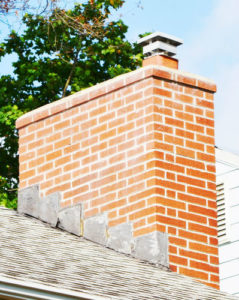You put a cap on something to cover it up. Ball caps cover your head to protect it from the hot sunshine, protect your hair from the blowing wind, or hide your hair during a bad hair day. You put a cap on a pipe before you fix your sink so that water doesn’t spray all over. A radiator cap keeps water in your radiator. Caps are great at doing the jobs they’re created for, and your chimney cap is no exception. It’s surprising, then, that some chimneys don’t have chimney caps. If your chimney is one that doesn’t have a chimney cap, it’s a great idea to add one. Or if your existing chimney cap is in poor condition, it might be time to consider replacing it.
fix your sink so that water doesn’t spray all over. A radiator cap keeps water in your radiator. Caps are great at doing the jobs they’re created for, and your chimney cap is no exception. It’s surprising, then, that some chimneys don’t have chimney caps. If your chimney is one that doesn’t have a chimney cap, it’s a great idea to add one. Or if your existing chimney cap is in poor condition, it might be time to consider replacing it.
Purpose of a Chimney Cap
Many times, people get a chimney cap confused with a chimney crown. Every chimney has a crown. It is the cement part at the top of the chimney, and it also serves an important purpose of directing water away from the joint where roof meets chimney. It’s designed to have a downward slope away from the chimney opening, and has at least a two inch overhang over the rest of the chimney. It’s important that your chimney crown is free from cracks or chips so that it can do its job. But a chimney cap also is important in keeping water out of your chimney.
A chimney cap rests on top of the chimney crown. It is uniquely designed to keep rain out of your chimney opening while allowing smoke to get out of your home. It has four grated metal sides and a slanted roof. The roof keeps rain out and directs it onto the slanted chimney crown. The grated sides allow smoke to get out. But that’s not the only purpose for the grated sides of your chimney cap.
Your chimney is the perfect environment for birds and animals to raise a family. It’s dark and warm, it’s dry and out of the strong winds and precipitation that storms can bring, and it’s not an easy place for predators to get in and disrupt the nest. It’s not at all uncommon to hear chirping in your chimney in the spring. Beyond being an annoyance, this can be a health concern because of the droppings left behind and the possibility of a dead critter in your chimney. Also, when the family leaves, the nest stays behind, drying as the summer passes. This dry nest could easily catch a spark and cause a chimney fire if left undetected. The grated sides of your chimney cap are an effective barrier, keeping critters and dried leaves, twigs, and other debris out of your chimney.
Call Chimney Concepts
If your chimney cap is in a state of disrepair or if you don’t have a chimney cap, give Chimney Concepts a call. We can help you find the perfect chimney cap to fit your chimney opening and the look of your home, and then can install it before the nasty winter weather arrives. Give us a call today!
